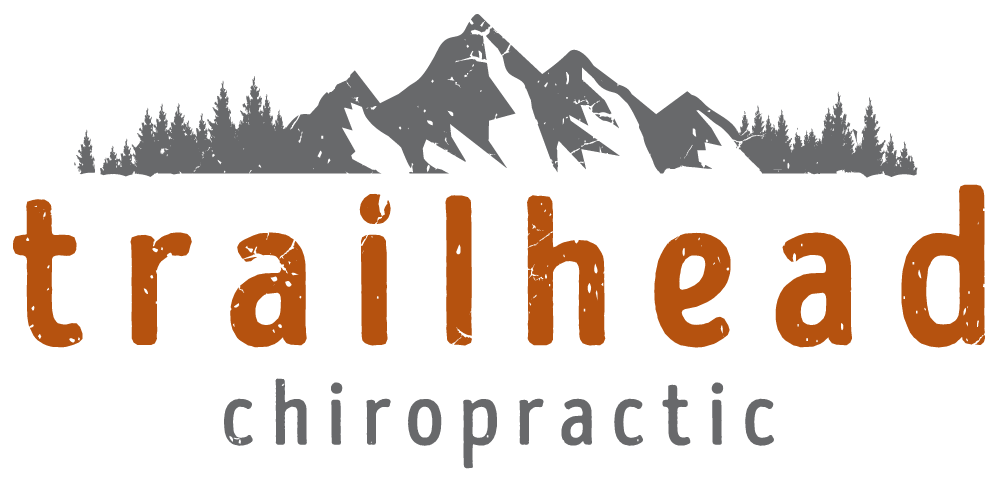People of all ages can benefit from chiropractic care
Part of the chiropractic philosophy is that chiropractic care is appropriate for anyone, in fact a popular saying is that chiropractic benefits everyone across their life span, 'from womb to tomb'. And yet while most people can easily understand adults needing chiropractic care, for many the concept of chiropractic adjustments benefiting those who are very young or much more seasoned can seem less obvious!
Two common questions we get asked in our clinic are “Why would babies need chiropractic?” and “At my age, is it too late for me to benefit from chiropractic care?” Well today we’re going to discuss the things that we do and the things that happen to us in each stage of life that could affect our body, as well as how we can counteract these things through chiropractic care!
Here we go!
Newborns:
Imagine it: you just had a baby. This tiny human has had no car accidents, no colds/flus and no falls. You might be thinking “Why on Earth would this baby need chiropractic support at such a young age if nothing has even happened to it yet?” Except something has happened. This baby has spent nine months slowly and gently developing in mom’s belly, until all of a sudden this baby is born. If you’ve ever been through labor or witnessed someone go through labor, you know that this process is not easy and it’s not gentle.
The vaginal birthing process involves hours of contractions that exert compressive forces on your baby. We know this process can be tough on babies because among the things that they can experience are getting stuck on mom’s pelvis, fractures and bruises, hematomas, misshapen heads, and torticollis. Even with a cesarean delivery, which can be a quick process, babies experience large pulling forces that can have a big impact on their neck and, if excessive, can cause fractures and nerve damage.
Not only are there physical traumas that can happen during the birthing process, but newborns also must deal with being bombarded by new stimuli once they emerge into the external environment. They are bombarded with light, sensations of being carried, moved about, clothed, bathed, and more. It's a lot! And in addition to all of this, their digestive system must fully function for the first time ever, so they tend to struggle with colic, reflux and constipation. Simply existing is a huge physiological undertaking for their body and in the middle of all of this is the nervous system, working hard to coordinate everything!
By providing gentle and specific chiropractic care to newborns, we’re not only helping to correct bony misalignments and muscle imbalances that occur with birth, but we also aim to remove nerve interference and allow their body to better process and integrate information about their new reality.
Babies:
The first year of life for a baby involves an incredible amount of development. They have sporadic body weight changes and they develop muscle strength, motor control and coordination as they begin to roll, sit, crawl, stand, and walk. They are also developing cognitively and socially, as they learn to engage with caretakers, smile, laugh, and reach for objects. In this stage they should be getting a lot of stimulation so that they can slowly make sense of the world, learn it, unlearn it, adapt, and do their best to navigate it. Again, it’s a huge undertaking by their body and the nervous system.
The first few months of a baby’s life are usually spent laying on their back or being cradled because they still don’t have the ability to move around. At this point, the mere constant pressure of them laying on their back or being held in a parent’s arms can cause flat spots in the back or side of their head, which can snowball into baby preferring to look one way, only rolling to one side, an abnormal crawling pattern, and so forth. On the other hand, as babies get older and they start becoming more mobile, inevitably they will start having numerous bumps and falls per day, which makes it so that they have an increased risk of gradually developing shifts in their spine and affecting optimal nervous system functioning.
From a chiropractic perspective, we want to catch and correct adverse childhood events -from small trips to bigger falls - and the biggest thing we’re looking out for is if there’s any bony misalignment or restrictions that could be impeding the functioning of their nervous system, their ability to appropriately meet milestones, and their capacity to continue to optimally adapt to this world.
Toddlers:
At this point, we’re talking about 2-3 year old’s who are just now becoming much more independent. They are much surer about themselves in the way that they walk and talk, and they’re learning so much about their world and how it works. Inevitably, they are getting numerous scrapes and taking tumbles on a daily basis, in which case our biggest concern is to again monitor their development, catch and correct shifts in their body as they occur before they become a bigger issue.
Young children and young adults:
While you might consider young children and young adults to be totally different 'species', they have a lot more in common than we might think and these common denominators can definitely contribute to microtraumas or shifts in their spine.
The first thing to consider for these ages is that this is when we start spending hours upon hours in school, sitting at desks, doing homework, and studying for exams. During these years, we start becoming more sedentary and we start performing repetitive movements that, down the road, can and will contribute to headaches, neck pain and back pain. Equally important, we start taking on more stress in our life at this point, and so physiologically our body has to manage our developing mental health.
Another huge common denominator between young children and young adults is that they tend to feel invincible. Their body is young and adaptable, they can take tumbles without fear of big injuries, they can eat processed foods without feeling as many consequences, and their inexperience can have them doing some reckless stunts. Because their body is incredibly adaptable and can compensate for now, they might not realize that without taking the proper steps early on, they could be setting the foundation in their body for pain, aches, stress, and chronic consequences down the road! With chiropractic our focus is to lay a healthy structural foundation so that we can see these healthy kids become healthy adults.
Older Adults:
In middle adulthood, the biggest contributor to a lack of health can be our work. Sitting all day for work can involve repetitive movements that put increased pressure on our spine. Desk jobs can involve neck pain, low back pain, carpal tunnel syndrome and more. A lack of movement means less lubrication of joints, so this can also speed up degeneration and arthritis in our spine, not to mention affect our cardiovascular health among other things. On the other hand, if your work has you constantly on your feet or lifting heavy things, you can experience all of the above plus things like disc issues, muscle imbalances and a chronic injury.
Something else we have to factor in during this phase of life is children. At this point many of us have children to raise and take care of. Physically, this can be exhausting and cause injuries because for the first two years of life, there's a lot of baby holding for many hours of the day, bending over changing tables, bending down to the ground to engage with toddlers or hurting ourselves during roughhousing and play time. Mentally, this can be one of life's most rewarding journeys, but it's also one of the hardest. A large part of being a parent can be worrying over parenting strategies as you try to give your child the best childhood possible and raising them right while dealing with your own past and present, such as childhood trauma/childhood abuse, a current traumatic event, or life stressors that affect your very own emotional regulation.
A third curious aspect of this stage is that at this point our body can start feeling the effects of things we overlooked when we were younger. Our body tends to give us signals that we may not have been investing in our health as we should have and we can start developing aches, stiffness, health issues, and not to mention we also have higher amount of stress from life such as bills to pay, children to raise, personal relationships and boundary setting.
At this point chiropractic can go a long way towards finally getting to the root cause of many of our aches and pains, slowly peeling back these layers of misalignments and restoring proper brain-body communication so that our bodies can heal to the best of its ability. This can provide physical relief in our day-to-day life, but by removing interference from your nervous system, this could also mean optimizing the parasympathetic system and your body's ability to respond to stress.
Elderly:
Lastly, at this age people are retired and you might think that by slowing down there's not a whole lot going affecting our body. On the contrary, one of the biggest contributors that keep older people moving and grooving is grandchildren. Young children adore their grandparents: they always want to be picked up by them and they want them front and center playing with on the floor with them. Grandparents and grandkids can have the sweetest of relationships, but this can come at the price of aches, pains, and exhaustion!
On the other hand, at this phase of life people can be much more sedentary and even when active, activities like mowing the lawn, working on a garden, hiking, and driving can have a bigger impact on their body compared to when they were younger. At this age, one's body has more degeneration, decreased wound healing, less range of motion, less flexibility, slowed reflexes, and less strength and stability. Because the body's structure is more affected, their body's function becomes progressively affected as well. This can mean that their ability to adapt is decreased and healing can take place at a slower rate than usual. At this point, our biggest aim from a chiropractic perspective is to:
Support their body and nervous system so that they can improve their body function in terms of mobility, strength, and reflexes.
Support their ability to sleep and ease in getting into bed as well as out of bed.
Set goals and support them so that they may remain independent and maintain their quality of life.
Takeaway:
There's no average age where chiropractic benefits you more or less. From infancy and childhood to early adulthood and later adulthood chiropractic can be a huge benefit no matter what stage of life you are in! Because we are always being bombarded with physical, mental and chemical trauma, our body needs life-long support so that we can keep ourselves healthy, mobile, and pain-free. In terms of public health and at a point where life expectancy in the US keeps decreasing, developing and maintaining wellness is becoming increasingly important instead of just treating disease. There's many ways to contribute to your wellness, but the biggest goal behind this blog post is to reassure you: it is never too early or too late for chiropractic care and health.











































